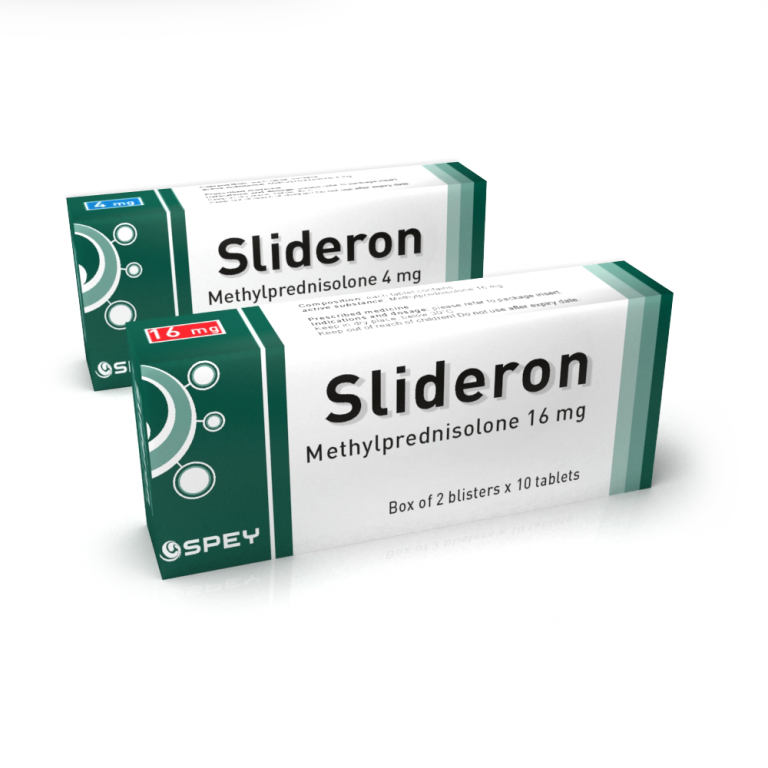

Methylprednisolone in Slideron is a synthetic glucocorticoid with a pronounced action. Corticosteroids pass through cell membranes via diffusion to form complexes with specific cytoplasmic receptors which penetrate into the cell nucleus, bind the DNA and stimulate the transcription of the tRNA and subsequent protein synthesis of various enzymes with different functions in the body.
Methylprednisolone – 4 mg
The product is used as a substitution therapy in endocrine disorders, such as primary and secondary adrenal insufficiency, and congenital adrenal hyperplasia. It is used as a symptomatic agent in the following groups of diseases:
Adults: The amount of the initial dose may vary, depending on the type and severity of disease/condition and the response to the treatment performed. The treatment should continue at this dosage regimen to achieving the desired clinical response. Very high doses are required in multiple sclerosis (200 mg daily), brain oedema (200 – 1000 mg daily) and organ transplantation (up to 7 mg/kg daily). If no adequate clinical response has been achieved after a sufficient period of administration, re-evaluation is needed with regard to verifying the initial diagnosis or switching to another clinically adequate therapy.
Once the desired therapeutic response has been achieved, the daily dose should be gradually reduced, as soon as possible, to complete cessation of the treatment in acute conditions (seasonal asthma, exfoliative dermatitis, acute eye inflammation) or to achieving the minimal effective maintenance dose in chronic diseases/conditions (rheumatoid arthritis, systemic lupus erythematosus, bronchial asthma, atopic dermatitis).
In chronic diseases/conditions, it is important to take into consideration that the dose reduction (from the initial to the maintenance dose) should be done in a suitable way, depending on the clinical status, and to levels, where the risk of an eventual relapse of the disease is not high.
Children: The dosage in children is determined by the physician’s evaluation and is based on the clinical response. The treatment should be performed by administering the minimal effective dose for the shortest period of time. If possible, the daily dose should be administered as a single dose, every other day. Elderly: The treatment in the elderly, especially the continuous one, should be carefully performed with regard to more serious complications resultant from the undesirable effects in this age group, particularly, osteoporosis, diabetes, hypertension, higher susceptibility to infections and skin atrophy, etc.
Alternative dose regimen: In the alternative dose regimen, the daily dose is doubled and administered as a single daily dose, received at 08:00 in the morning, every other day.
With this type of therapy is meant, on one side, to ensure the positive therapeutic effects in patients with chronic diseases, and on the other, to diminish some of the severe undesirable effects, such as pituitary-adrenal suppression, Cushing’s syndrome, withdrawal symptoms and growth retardation in children.
